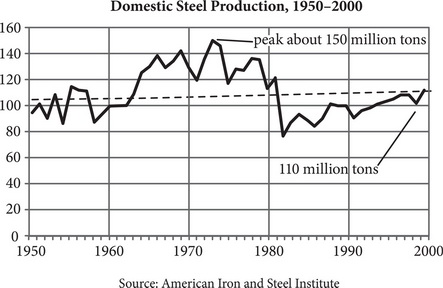PSAT Reading Practice Test 9
Questions 1-10 refer to the following information.
This passage is adapted from Alex Kotlowitz, Never a City So Real. © 2004 by Alex Kotlowitz.
Fourteen miles southeast of the Loop, at the base
of Lake Michigan, the city's easternmost corner, one
finds a fistful of neighborhoods with hearty names
like Irondale, Hegewisch, The Bush, and Slag Valley.
05This is South Chicago. Apart from Altgeld Gardens—a
vast public housing complex virtually hidden from the
rest of the world by towering mountains of garbage
and often referred to as Chicago's Soweto—South
Chicago is the city's most isolated community, its most
10removed. The labor lawyer and author Tom Geoghegan
has called it "a secret city." The vast majority of
Chicagoans have never set foot here, and as if to
ensure such detachment, above the compact redbrick
bungalows with postage-stamp-size yards looms the
15Chicago Skyway, a highway on stilts, which takes the
prosperous to their cottages along the Indiana and
Michigan shorelines. The neighborhoods below are
modest in appearance, a collection of small homes and
small taverns and diners with simple names like Steve's,
20Pete's Hideaway, Who Cares?, Small World Inn, and
Maria's Den. There's nothing fanciful about this area.
As one observer wrote: "Streets named Commercial
and Exchange offer testimony that people came here to
make a buck, not admire the scenery."
25And yet the scenery, so to speak, is awe-inspiring,
the man-made equivalent of the Rockies. Dark, low-
to-the-ground muscular structures, some three times
the size of a football field, sprawl across the landscape,
sprouting chimneys so tall that they're equipped
30with blinking lights to alert wayward aircraft. These
chimneys shoot full-bodied flames thirty feet into the
sky; at night they appear almost magical, like giant
torches heating the moon. Billows of smoke linger in
the air like phantom dirges. It used to be, when the
35steel mills were going strong, that these smokestacks
spat out particles of graphite that would dust the streets
and cars and rooftops like snow, catching the sun and
setting the neighborhood aglitter. Suspended conveyor
belts, pipes, and railroad overpasses weave in, out, and
40over the behemoth buildings. The noise is crushing,
the stench of sulfur so powerful that not even a closed
car window can keep it at bay. Had Rube Goldberg lost
his sense of humor, this is, I imagine, what he would
have produced.
45This is the heart of American industrial might,
or what's left of it. The first of the mills was built in
the 1850s, and within a hundred years more steel
was produced in this stretch of land than anywhere
else in the world. The freighters delivered iron ore
50from Minnesota's Mesabi Range, and the mills turned
the mineral into steel, shipping it west by rail and
eventually east by the St. Lawrence Seaway. By the
1960s, the mills employed eighty thousand men
and women; they cascaded in from Poland, from
55Yugoslavia, from Mexico, and from the American
South. Steel mills and refineries lined up along the
dredged Calumet River and along the Lake Michigan
shoreline, extending twenty-two miles from South
Chicago to Gary, Indiana. This stretch of boiling steel
60was the equivalent of an industrial mountain stream,
the source for can openers and knives, refrigerators
and cars, bridges and skyscrapers. It fed this country's
insatiable hunger for consumption and comfort. It was,
in short, the nation's lifeblood.
65The local population is still so dependent on the
mills that the daily newspaper in Hammond, Indiana,
which is just over the Chicago border, runs a box
score every Wednesday of the region's steel tonnage
and capacity. Nonetheless, there are only fifteen
70thousand working in the mills now; the owners grew
complacent, so accustomed to their oligopoly that they
forgot how to compete. Between the mills that still
roll steel, there are hundreds of acres of vacant land
littered with abandoned factory buildings stripped
75of their exteriors, brick coke houses collapsing in on
themselves, and railroad tracks and bridges that have
turned a muddy brown from rust.
